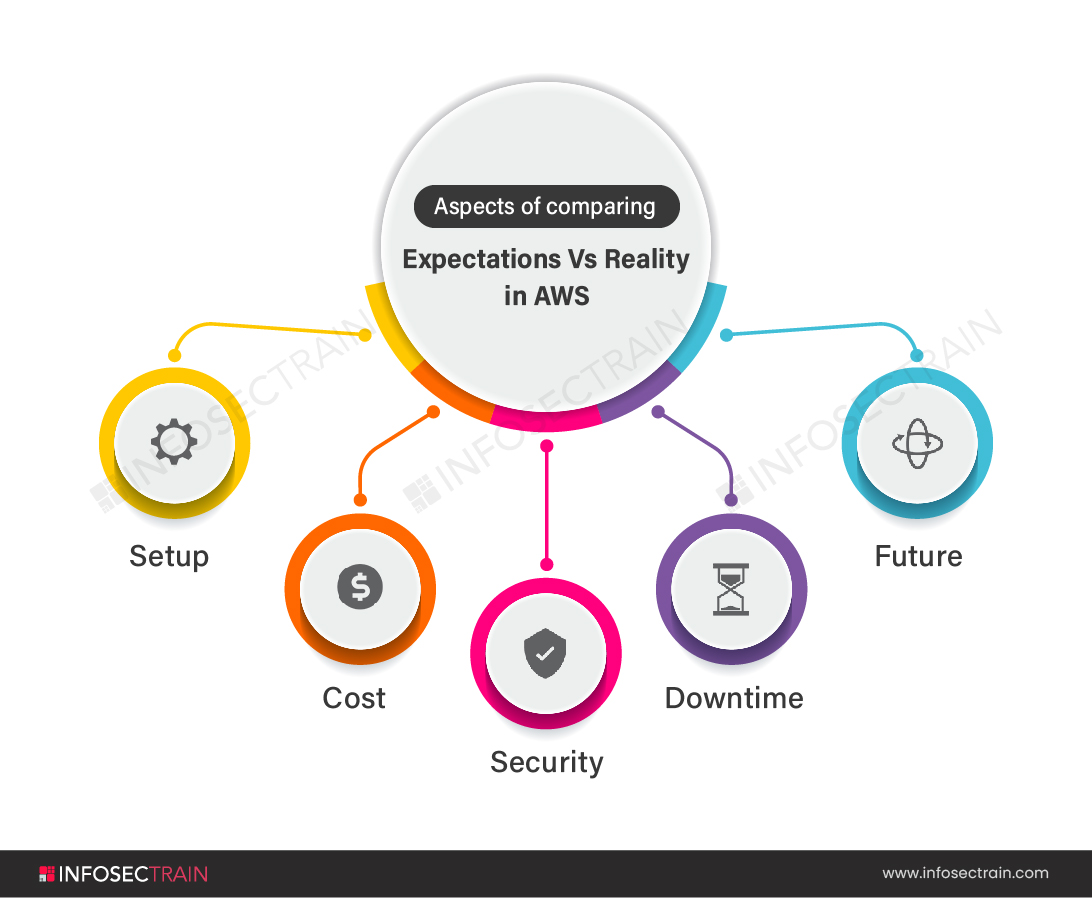AWS: Expectations Vs Reality
Since the 1990s, Amazon has significantly invested in the development and management of large-scale distributed and capable IT infrastructure. Amazon makes IT resources available on demand by using decentralized or distributed IT infrastructure. Amazon Web Services, abbreviated as AWS was introduced as a cloud computing platform by Amazon in the year 2006 in order to allow other companies to benefit from this dependable IT infrastructure.

AWS is an effective solution for operating web apps or organization portals in a variety of circumstances. A small manufacturing company may leverage its skills to grow its business by producing high-quality goods while outsourcing IT administration to AWS. A big business with a worldwide footprint may use AWS to teach its scattered staff. AWS may be used by an architecture consultancy firm to achieve high compute rendering of its building prototypes. A media firm may avail AWS to deliver many sorts of content to its clients, such as movies, eBooks, and audio files.
Popularity of AWS
AWS has an easy-to-use registration process. Simply enter your credit card information and enjoy AWS’s services. Furthermore, AWS’s server capacity is six times that of its competitors in the market, allowing it to always manage greater traffic on the website. It is also a trustworthy provider, as it is used by many large companies such as Netflix, Twitch, and LinkedIn. It is the preferred option of companies for Cloud computing services since it provides a flexible pricing approach. These factors contribute to an increase in market demand for AWS services.
But before you jump to a conclusion on whether to use AWS or not it is extremely crucial to learn what it does and how helpful it is. It will be significantly influential to understand the difference between expectations and realities. There is no denying that more and more businesses are shifting to cloud-based solutions. This massive paradigm shift has greatly helped AWS since no other option comes close to what they provide.
Expectation Vs Reality

We have compared the expectations and reality of AWS on the basis of:
1. Set-Up
Setup is the most important aspect and the first step that must be executed before availing of any service.
Expectation: It is usually believed that setting up AWS will be simple because Amazon wants more businesses to use its solution. As a result, they wouldn’t have kept a complex setup process.
Reality: The setup procedure of AWS is indeed pretty simple. They have provided various online lessons to ensure engineers can get on with their work smoothly. There is a lesson for each of the services, from operating the database to hosting a website.
2. Cost
Cost is another big concern when it comes to moving your business to Cloud.
Expectation: A large part of the audience expects Amazon to be expensive because of its growing popularity in the market. Also, because it now has a solid monopoly, Amazon may price it to its discretion.
Reality: The reality is quite different from the expectations as AWS is extremely cost-effective. You’ll be able to save money by increasing your productivity if you use AWS. Also, the entire cost of its deployment and usage is lower when compared to other accessible marketing options.
3. Security
Security is a non-negotiable aspect for any business and if you’re using the cloud then security becomes significantly important.
Expectation: The majority of people assume that in the cloud, the security is compromised. Developers using AWS must be extra cautious because it is vulnerable to exposure and its security can be breached effortlessly.
Reality: Amazon provides unquestionable security measures. When it comes to security, Amazon has made a lot of efforts to ensure proper security for its users. Although developers must exercise caution when deploying their solutions, the services provided by Amazon in this respect are excellent.
4. Downtime
This is also an important factor that must be considered when using cloud services for your business.
Expectation: Many users consider that downtime in any service is unavoidable regardless of how powerful the solution is. They believe that consumers must set reasonable expectations because even a tech giant like Google, experiences downtime.
Reality: It would be totally wrong to say that Amazon does not experience downtime but in reality, AWS outperforms Google. What I want to imply here is that users may expect very little, like <1% downtime of the service. This effective approach of this service is the reason for more businesses moving in this direction.
5. Future
Business is all about taking risks but to be on the safer side, you do take the scope of the service you’re using into account.
Expectation: Some users say that AWS is undoubtedly in good demand, but this is the best it has to offer. It is best to jump in now and keep your choices open for later.
Reality: AWS does have a strong position in the market right now but that doesn’t stop it from getting any better. They are expanding their present range of services every few months and making efforts to improve their existing successful system and assist their clients in growing even larger. The wonderful part about these solutions is that as you use them more, they improve. This is why an increasing number of individuals are utilizing it.
AWS with InfosecTrain
AWS certification offers many beginners or senior-level profiles in any organization so it is justified if the employers prefer resumes with certified AWS credentials. Professional training and certifications of AWS will help you advance your profession and differentiate yourself from other candidates. With InfosecTrain, you will take the first step towards becoming a certified AWS Cloud Engineer. We are one of the world’s most prestigious and well-recognized security and technology training and consulting firms. We offer a wide range of AWS certification training led by highly qualified and experienced instructors. InfosecTrain’s AWS and Azure training will help you gain a deeper understanding of the topic. It will be well worth every penny and minute of your time.







 1800-843-7890 (India)
1800-843-7890 (India)